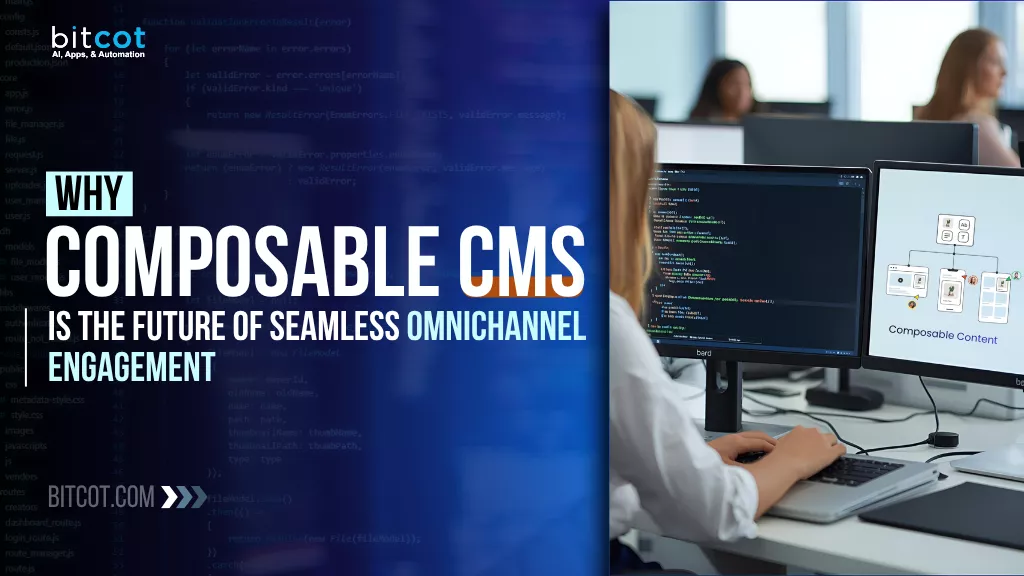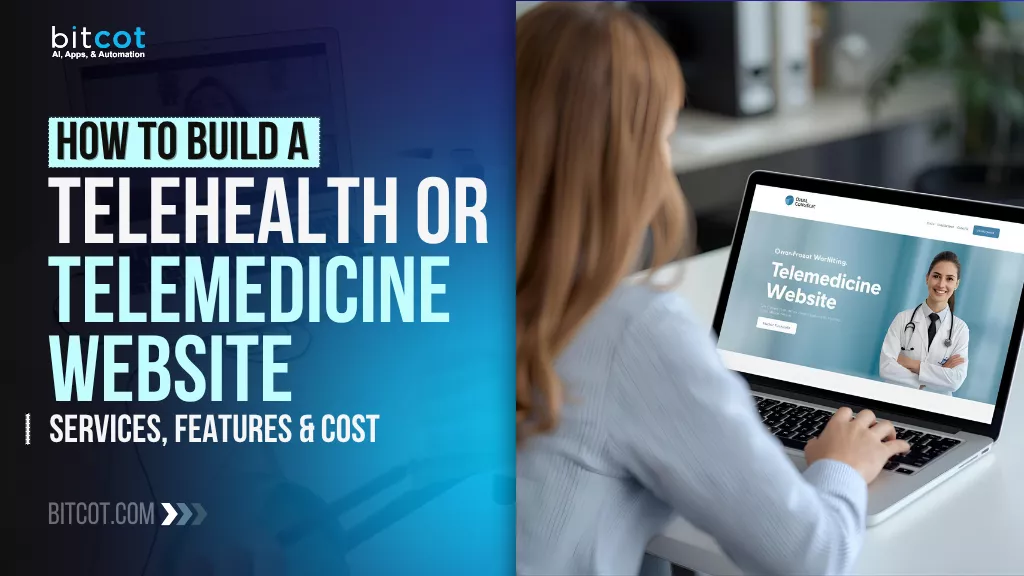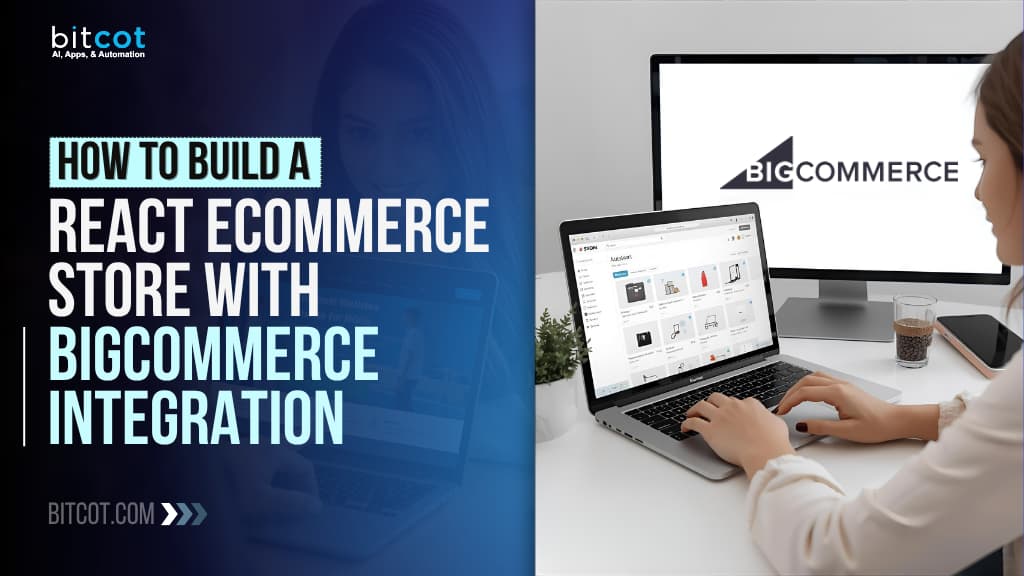
The way most businesses manage digital content today is fundamentally broken.
Your website delivers one experience, your app another, and your smartwatch notifications feel like they belong to a different brand altogether.
You’ve probably experienced this frustration firsthand. Your teams work in silos, integrations constantly break, and what should be a unified customer journey turns into a disconnected mess.
This inconsistency isn’t just annoying. It’s costly. Customers notice the gaps, trust erodes, and revenue quietly slips away to competitors with smoother, more cohesive digital ecosystems.
If you’re a CEO, CTO, or non-technical founder focused on building a truly unified brand experience across every digital channel, this insight matters to you.
Because the organizations that master omnichannel consistency now will define the next decade of customer engagement.
At Bitcot, we’ve seen how forward-thinking enterprises use composable CMS architectures to cut deployment times, eliminate integration chaos, and deliver perfectly aligned content across every touchpoint.
In this article, you’ll discover why composable CMS is the future of omnichannel engagement, how it solves the pain points traditional CMS platforms can’t, and what steps you can take to modernize your digital infrastructure without starting from scratch.
By the end, you’ll walk away with an actionable roadmap to future-proof your content strategy, delight your customers, and drive measurable growth.
Let’s begin by understanding why traditional CMS systems are holding businesses back.
Why Traditional CMS Fails for Omnichannel Content Management
Imagine this situation. It happens in organizations every single day.
The marketing team works in one CMS. Developers build custom solutions for mobile apps. Customer service uses a different platform. And IoT devices? They’re pulling data from who-knows-where.
This creates chaos. And customers notice immediately.
Here’s what happens: Someone adds items to their cart on desktop. They open the mobile app later. The cart is empty. Or they start a chat on the website. When they call customer support, they have to explain everything again. Product information is different on each channel.
These aren’t small annoyances. They cost businesses millions in lost sales and damaged trust.
Traditional CMS platforms were built for one thing: websites. Everything else is an afterthought. These platforms use complicated integrations that break constantly, limiting your ability to share content easily across channels.
What Is Composable CMS and How Does It Work?
Composable CMS, also known as headless CMS architecture, changes everything.
Instead of forcing one system to do everything poorly, the composable approach uses specialized tools that work together perfectly.
Think about it this way. Would you rather have one tool that tries to be a hammer, screwdriver, saw, and drill all at once? Or would you rather have the best version of each tool, designed to work together?
That’s composable CMS.
Here’s how it works: Your content lives in one central place. It’s completely separate from how it displays.
This means you can push the same content to your website, mobile app, smartwatch, voice assistant, digital signage, or any channel that doesn’t even exist yet.
Benefits of Composable CMS for Omnichannel Engagement
Real omnichannel engagement looks like this:
A customer asks their smart speaker about store hours. They get an instant answer. On their commute, they browse products on the mobile app and add items to their cart. At lunch, they check the website on their laptop.
Those same items are still there. They buy. Later, their smartwatch notifies them when the order ships. At pickup, the store kiosk recognizes their order immediately.
Every single touchpoint feels connected. Natural. Easy.
This isn’t some far-off future. Composable CMS makes this possible right now.
How Composable CMS Architecture Enables Multi-Channel Content Delivery
Composable CMS uses API-first architecture. Everything talks to everything through modern APIs.
Here’s what makes this powerful:
- Content Repository – Independent from presentation layer
- API Layer – Flexible and future-ready
- Display Layer – Customizable for each channel
The content repository doesn’t care if it’s sending data to a React website, a Flutter mobile app, or a voice interface. It just delivers your structured content. Each platform then displays it the right way.
This is huge for developers. Traditional CMS platforms force developers into specific templates and languages. Composable CMS? Developers can use whatever technology works best for each channel. Want Next.js for your website and React Native for your app? Done. The CMS doesn’t get in the way.
But here’s where it gets really powerful: You’re not stuck with just one CMS. The composable approach lets you connect best-in-class tools through modern APIs so they all work together.
Maybe you use Contentful for marketing content. Shopify handles e-commerce. Salesforce manages customer data. All these pieces work together through modern APIs.
What You Really Get: ROI and Business Benefits of Composable CMS
Simply put? Composable CMS delivers real business value.
Faster Time to Market: Need to launch a new digital channel? Your content is already there, structured and ready. Companies are cutting launch times from months to weeks, sometimes even days through rapid development and deployment.
Real Flexibility: Want to change your mobile app framework? Redesign your website? Add a new channel? With composable architecture, you can change individual pieces without breaking everything. You can innovate without fear.
Consistent Everywhere: When content lives in one place, your message stays the same everywhere. Change a product description once. It updates across every channel automatically. No more confusion between teams.
Future-Proof: Remember when responsive design became essential? Everyone had to rebuild their websites. Or when apps became critical and companies scrambled to catch up? Composable architecture prepares you for whatever comes next. AR glasses? New voice interfaces? Your content is ready.
Composable CMS vs Traditional CMS: Developer Advantages
Here’s something business leaders often miss: happy developers matter.
Developers using traditional CMS platforms feel stuck. They work within rigid constraints. They use outdated technologies. They spend more time fighting the CMS than building great experiences.
Composable CMS flips this completely. Developers use modern tools they actually want to work with. They follow best practices without workarounds. They move fast without breaking things.
Here’s why this matters: Happy developers are productive developers. When teams aren’t constantly frustrated by technical debt and limitations, they ship better products faster. That’s competitive advantage. That’s revenue growth.
Omnichannel Personalization with Composable CMS
Want to know one of the most powerful benefits? Advanced personalization becomes actually doable.
When content is structured and accessible via APIs, you can add smart personalization engines that work in real-time across every channel.
A customer browses winter coats on your website. Later, they open your app and see relevant recommendations. Their abandoned cart shows up intelligently across email, website, and app, wherever they’re most likely to buy.
This level of smart, connected personalization and real-time customer experiences was nearly impossible with traditional CMS platforms. With composable architecture and headless CMS solutions, it’s becoming standard.
How to Implement Composable CMS: A Step-by-Step Approach
The good news? You don’t have to rip everything out and start over.
The composable approach works one step at a time. Here’s how to make it happen:
Step 1: Assess Current Architecture and Pain Points
- Audit existing content systems and find bottlenecks
- Map out all digital channels and content sources
- Document integration problems
- Identify which channels cause the most headaches
- Get feedback from development, marketing, and content teams
Step 2: Define Omnichannel Strategy and Goals
- Decide which channels matter most for your business
- Set clear success metrics (speed, consistency, performance)
- List future channels or technologies on your roadmap
- Define personalization and customer experience goals
- Create realistic timelines and budgets
Step 3: Select Composable CMS Components
- Research headless CMS and composable CMS options that fit your needs
- Check API capabilities and integration flexibility
- Evaluate content modeling and scalability
- Review vendor support, documentation, and community
- Pick complementary tools for commerce, assets, and personalization
Step 4: Start with a Pilot Project
- Choose one channel or content type for the first try
- Pick a visible project with manageable scope
- Disconnect this channel from existing systems
- Build a proof of concept with clear success metrics
- Document what you learn and improve the approach
Step 5: Develop Content Models and Integrate Systems
- Create structured content models for multi-channel delivery
- Design API architecture for seamless content delivery
- Plan content migration with zero downtime
- Connect your chosen pieces through APIs
- Add security, caching, and performance improvements
Step 6: Train Teams and Establish Workflows
- Give thorough training to content creators
- Write down new processes and best practices
- Make roles and responsibilities crystal clear
- Set up content creation and approval workflows
- Add monitoring and analytics for content performance
Step 7: Expand and Optimize Continuously
- Gradually extend composable architecture to more channels
- Monitor performance and user experience metrics
- Make improvements based on data and feedback
- Add new components and features as needed
- Scale infrastructure to handle growth
The key? Take strategic, measured steps. Keep current systems running while building the future. The all-or-nothing approach rarely works.
Why Composable CMS Is Essential for Ecommerce Growth
Look, composable CMS isn’t right for every organization. But for businesses serious about seamless omnichannel experiences, for companies committed to meeting customers wherever they are with consistent, personalized content through enterprise-scale CMS and ecommerce solutions, there’s no better approach.
The future isn’t about finding one perfect system that does everything. It’s about having the right systems working together elegantly. That’s what a composable CMS delivers.
Companies embracing this approach now gain massive advantages. They move faster. They adapt easier. They deliver better customer experiences across every touchpoint.
At Bitcot, our custom ecommerce development expertise helps businesses navigate this transformation. The composable CMS revolution isn’t a question of if. It’s a question of when organizations will be ready.
The answer determines who leads in the omnichannel future and who struggles to catch up.
Ready to transform your content strategy? Let’s discuss.












